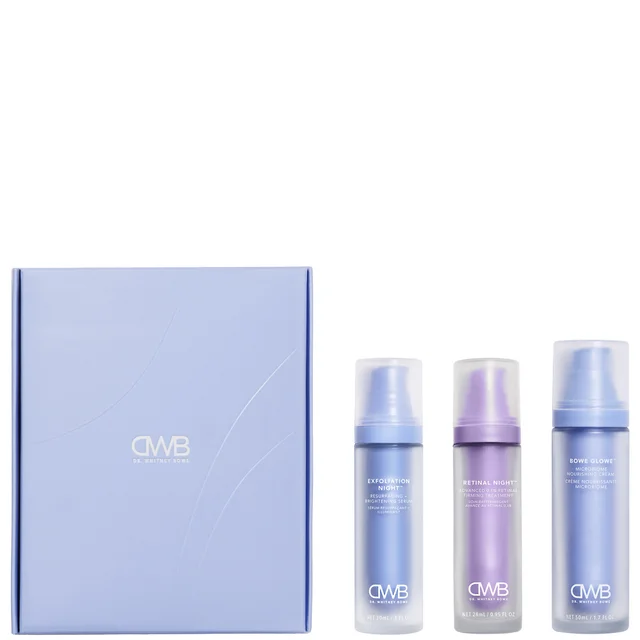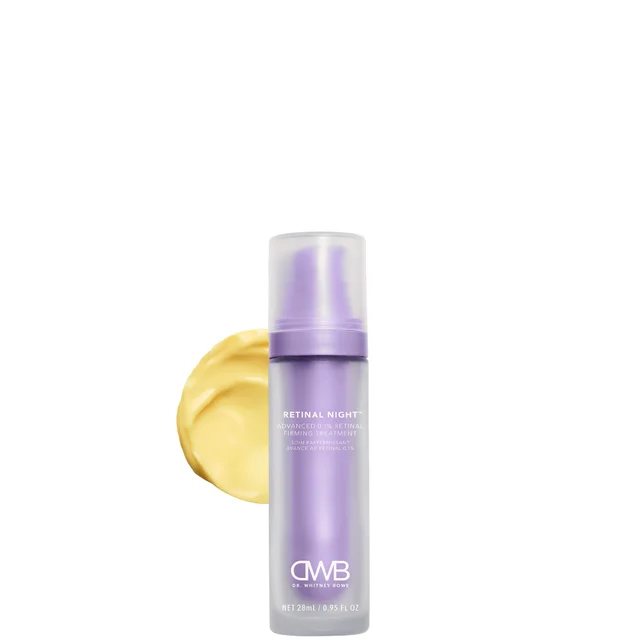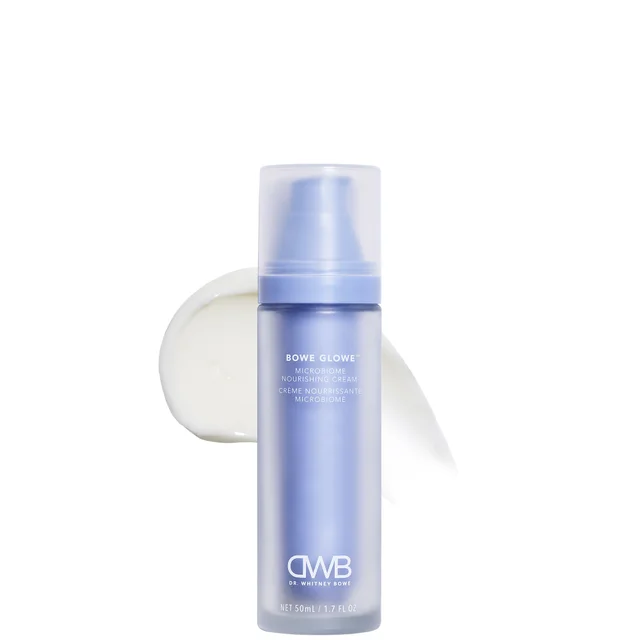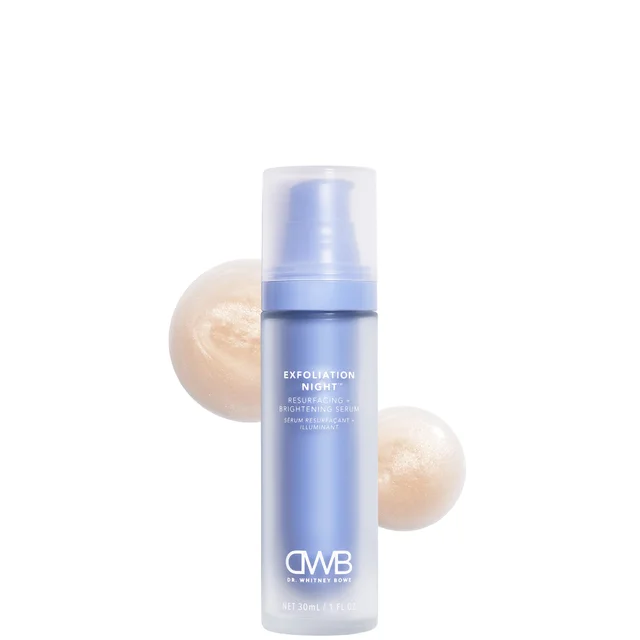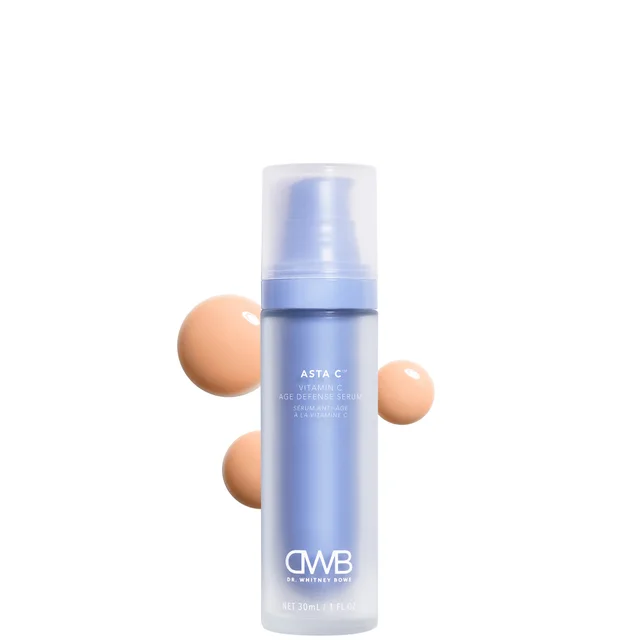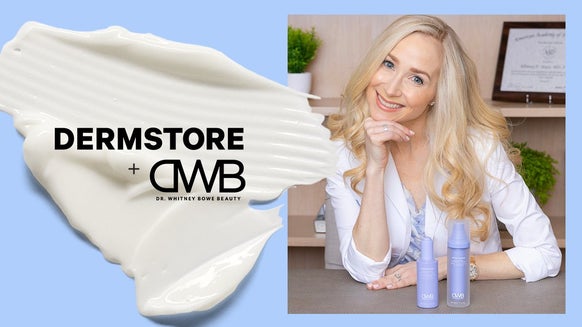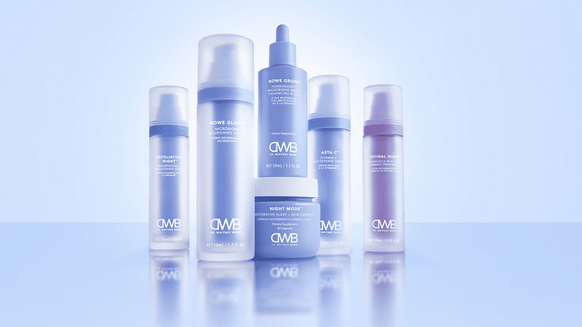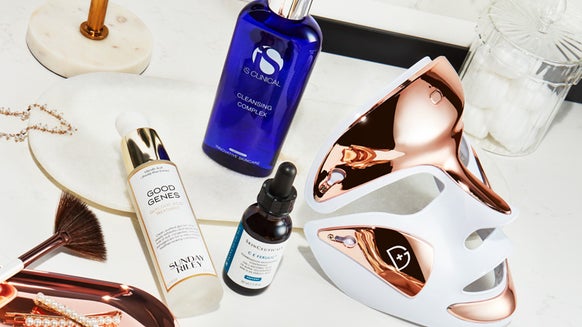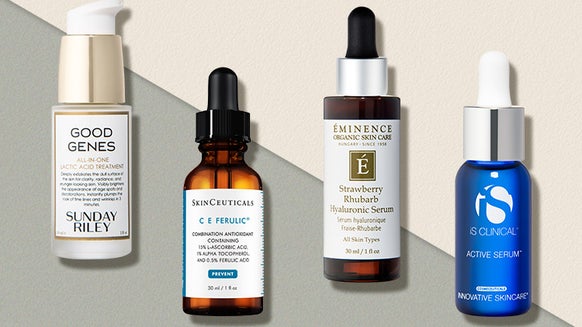The Ultimate Guide to Skin Cycling With Dermatologist Dr. Whitney Bowe
Unlike other skin care trends that come and go as quickly as you scroll down your feed, Skin Cycling is for keeps. Board-certified dermatologist, Dermstore medical advisory board member, and founder and CEO of Dr. Whitney Bowe Beauty, Dr. Whitney Bowe, known for her three-dimensional approach to skin care and her impressive background as a research scientist in addition to being one of the most in demand dermatologists in the country, created the Skin Cycling framework to streamline the evening skincare routine of her patients. Her patients often sought advice on how to use products in a strategic way to compliment one another while dialing down unnecessary irritation in between their office visits with Dr. Bowe.
Rather than experimenting with ingredient combinations that are irritating and damaging to your skin, Skin Cycling places skin barrier health at the forefront, where it belongs. Not only does it take the guesswork out of skincare, Skin Cycling is also malleable and customizable, and that is what is making it work for so many people with so many different types of skin concerns.
So how exactly does Skin Cycling work? And how do you get started? Read on to learn everything you need to know about Dr. Whitney Bowe’s Skin Cycling routine.
Table of Contents:
- What is Skin Cycling?
- The Science Behind Skin Cycling
- Getting Started with Skin Cycling
- Dr. Whitney Bowe’s Recommended Skin Cycling Products
- Skin Cycling FAQs
- The Bottom Line on Skin Cycling
What is Skin Cycling?
Skin Cycling is an intuitive, flexible framework that serves as a blueprint to teach you to listen to your skin. Dr. Bowe’s Skin Cycling schedule works as a guide which provides structure, organization, and dials down the guesswork and stress when it comes to optimizing your skincare routine.
The beauty of Skin Cycling is that it is not a one size fits all approach to skincare. Instead, you can adjust your cycling schedule to meet your skin where it is. The flexibility of Skin Cycling means that this approach is also able to meet your skin where it is through the different seasons and through changes in hormones, and skin goals over the years.
The Science Behind Skin Cycling
The skin’s natural renewal process varies from person to person, but for most adults, it occurs over a period of 28 to 40 days. As you age, however, this process slows significantly. A 50-year-old individual’s skin can take up to 50 days to regenerate while more mature skin can take up to 90 days. Other factors like stress, lifestyle, UV damage, and environmental aggressors can also take a toll on your skin and further decelerate this process.
When the skin takes longer to renew and repair itself, it tends to look dull and dry and have uneven tone and texture. Slower cell turnover also weakens your skin’s protection against UV rays and other external aggressors. Likewise, it hampers the skin’s supply of moisture and lipids, which new cells carry as they migrate to the surface layers and can then lead to more skin concerns like dehydration, discoloration, and a weakened skin barrier.
Skin Cycling helps mitigate these factors by supporting the skin’s renewal process on two fronts. First, by moving the shedding stage along through gentle exfoliation, and second, by speeding up the formation of healthier cells with the introduction of a retinoid and allowing your skin to recover.
Related Article: 5 Skin Cycling Benefits With Dermatologist Dr. Whitney Bowe
Getting Started with Skin Cycling
Skin Cycling draws newbies and experts alike because of how quick, simple, and adaptable the routine is. Plus, it can be incorporated into your nightly regimen at any time, regardless of your skin type, says Dr. Bowe. But as with anything in skin care, the first step in getting started with Skin Cycling is to listen to your skin and address what it needs.
In a video shared on TikTok, Dr. Bowe explained the “classic” four-night Skin Cycling routine, which went viral on social media. It is a great starting point for beginners who are new to exfoliating serums and retinoids.
Night One: Exfoliation
The first two nights of Skin Cycling are what Dr. Bowe calls “push” nights, where you essentially “push your skin outside its comfort zone.” On night one, it’s all about exfoliation and getting your skin prepped for the next three nights of your routine by removing dead skin cells and debris. As for what type of exfoliator works best, Dr. Bowe favors leave-on products like exfoliating serums over cleansers that you need to wash off. She recommends chemical exfoliators (with gentle acids like AHAs, BHAs, and PHAs) “as opposed to a gritty scrub because the acids are actually more effective and gentler for the skin barrier.”
If you’re new to exfoliation, Dr. Bowe stresses watching out for how your skin reacts. “If it burns, wash it off right away. If it tingles a little bit, that’s okay. You want to wait for the tingling to completely subside before you put on your cream.”
Night Two: Retinoids
Retinoids take center stage on night two of your routine. These anti-aging MVPs work at a cellular level to boost collagen production while delaying and minimizing signs of aging, refining discoloration, and brightening complexion. But being the power ingredient that they are, retinoids need to be eased into your routine, especially for first-time users. On retinoid night, Dr. Bowe says it’s best to start with clean and dry skin, noting that you should never apply retinoids to damp skin as it can increase the chance of irritation.
For those with sensitive skin or new to retinoids, another way to minimize reactions, Dr. Bowe says, is by “sandwiching” it with a moisturizing cream. That means applying a layer of moisturizer to the most sensitive parts of your face—under your eyes, the corners of your nose, your mouth and chin area, and your neck—to act as a buffer for your retinoid. When using retinoid, Dr. Bowe says one pea-sized amount should be enough to cover your face, another for your neck, and two for your chest. Let the product settle for a minute or two and follow it up with another layer of moisturizer if your skin still feels tight or dry. Ultimately, the goal is to dial up your retinoid nights, but this is an excellent place to start.
Night Three and Four: Repair and Recovery
Nights three and four call for ramping up hydration and nourishment to allow your skin to rest and renew. That means hitting the pause button on any active ingredients that can interfere with your skin’s recovery. After cleansing your skin, you can leave it damp and apply a hydrating serum with ingredients like hyaluronic acid, ceramides, and niacinamide—all wonderful ingredients for your skin barrier—before capping off your routine with a moisturizing cream. “On recovery nights, you want to focus on nourishing your skin microbiome, repairing your skin barrier. Just think hydration and moisture,” she explains in another video posted on her website.
Dr. Bowe also shares variations on this Classic cycle, which include Gentle Skin Cycling (for especially sensitive skin) and Advanced Skin Cycling (for those who are experienced retinoid users). The Skin Cycling framework works for many people but we know that skin care is deeply personal and is rarely a one-size-fits-all kind of thing. It’s always best to speak with a medical professional before changing up your skin care routine or switching to new active ingredients to get expert advice on the best practices for your skin type.
Dr. Whitney Bowe’s Recommended Skin Cycling Products
As founder of Dr. Whitney Bowe Beauty, Dr. Bowe knows the importance of using skin care products and ingredients that enhance and support each other’s functions. This is particularly true for Skin Cycling. You want to make sure that even as you streamline your routine, you’re still covering all bases with multitasking ingredients that deliver exactly what your skin needs. And that’s what Dr. Whitney Bowe Beauty is all about.
Formulated with Skin Cycling in mind, Dr. Whitney Bowe Beauty’s range of products is science-backed and clinically tested to drive results, utilizing cutting-edge technology to measure how each product transforms the skin. Below are Dr. Bowe’s recommendations for the best skin care products for Skin Cycling.
This all-in-one solution is all you need to get started with your Skin Cycling routine. Featuring a low-strength retinal—a faster-acting and more advanced retinoid—that works great for first-time users, a barrier-repairing cream, and a gentle exfoliating and brightening serum, this trio ticks all the boxes as you go from night one to four of the classic routine or as you customize the Skin Cycling framework to meet your skin’s unique needs.
Infused with 0.1% retinaldehyde, this low-strength anti-aging serum packs enough punch to firm and smooth skin, enhance radiance, and refines the look of fine lines while being well-tolerated by the skin. All thanks to its advanced formula and proprietary delivery system that ensures your retinoid is working harder, faster, and smarter in delivering significant results. It also features hydrating peptides and lipids to support the skin barrier and reduce irritation.
Loaded with ultra-nourishing ingredients, including hyaluronic acid, ceramides, squalene, and pre- and postbiotics, this day and night cream is clinically proven to help repair the skin barrier in just one hour, making it the perfect partner for your recovery nights.
There’s no better way to kick off your Skin Cycling routine than this leave-on exfoliating serum that works hard to brighten your skin, refine the appearance of wrinkles and fine lines, and even out skin tone and texture. Infused with AHAs, PHAs, and BHAs, it does wonders not only on the surface but also goes deep in your skin to dissolve and slough away dead skin cells.
An antioxidant-rich vitamin C serum like Asta C Vitamin C Age Defense Serum is your best bet for daytime nourishment and protection (together with your cleanser, moisturizer, and SPF). It boosts your free radical defense as you go about your day while delaying common signs of aging, enhancing radiance, and refining dark spots. It can also be used on every night of your Skin Cycling routine if you slowly build up and give your skin time to adjust to incorporating these potent products into your routine. Begin by using Asta C each morning and then, you can add it to your recovery nights. Over several months, you can begin to introduce it on exfoliation night and retinoid nights as well. Of course, listen to your skin and customize the Skin Cycling framework to the cadence that works best for your individual needs.
Skin Cycling FAQs
Still have a few lingering questions about Skin Cycling? Here’s what Dr. Bowe has to say to clarify some common Skin Cycling concerns.
As Dr. Bowe mentions in her video, two cycles or eight days. “You can expect to see a healthier glow and an overall radiance to your skin. Your skin should overall just look and feel more hydrated; it will feel softer to the touch,” she explains. “And if you’ve struggled with any stinging or burning or blotchy red patches before Skin Cycling, that should already be getting so much better after just two cycles.” More significant results begin to show after two months, she adds, including less noticeable fine lines and wrinkles, firmer skin, and diminished dark spots.
Yes! Skin Cycling is meant to be customizable and address your skin’s unique needs. If you can’t use a retinoid, Dr. Bowe says it's perfectly fine to skip it altogether and switch to a gentler active, like peptides.
While Skin Cycling can be tailored for every skin type, those with skin conditions like eczema may not be able to cope with using two active ingredients on consecutive nights. In such cases, it’s best to start with one active for a few weeks and slowly introduce the other only after your skin has adapted. You can also turn night two of your routine into an extra recovery night. Of course, if you have a skin condition, always consult with your physician before changing your skincare routine.
The Bottom Line on Skin Cycling
Skin Cycling has proven itself to be much more than just a hyped-up social media trend. It’s a more strategic and targeted approach to skin care that allows you to have more control and direction in your regimen as opposed to being encumbered by multistep routines, layering order, and remembering which ingredient pairings work (and don’t work) together. By alternating your active ingredients and letting your skin recover, you’re also taking advantage of your skin’s natural renewal process and supporting barrier function.

Janeca Racho is a Journalism graduate with over 15 years of writing experience. After getting her start in public relations and advertising, she made the switch to freelance writing and began working for various lifestyle, fashion, and travel brands. Her love for all things skincare has led her to beauty reporting and research for the last ten years. Writing for several hair and beauty blogs, she reports on anti-aging staples, trending brands and products, must-have ingredients, and health and wellness.
